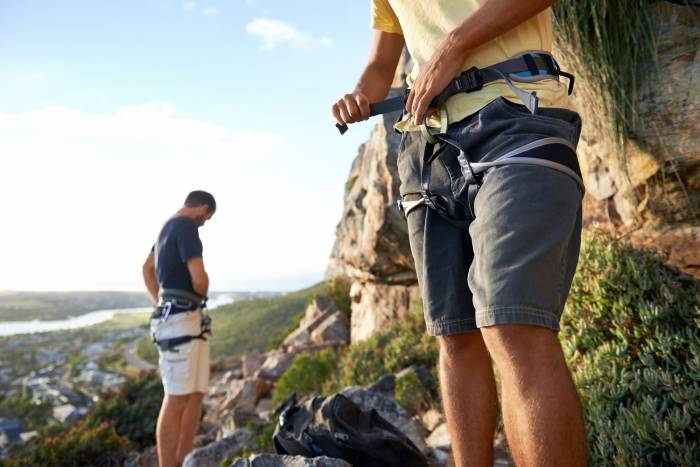Nepal’s government is preparing to move Everest base camp downhill to stable ground as human activity intensifies on the rapidly-retreating Khumbu Glacier.
As the Khumbu Glacier destabilizes and shrinks, reports indicate it threatens to swallow Everest base camp.
“We surprisingly see crevasses appearing overnight at places where we sleep,” Colonel Kishor Adhikari of the Nepali army — who was staying at base camp while leading a cleanup campaign during the spring climbing season — told the BBC.
“In the morning, many of us have this chilling experience that we could have fallen into them in the night. Cracks on the ground develop so often, it is quite risky.”
The scary part of climbing Mount Everest shouldn’t be sleeping at base camp. And for that reason, the Nepali government plans to move the camp’s location downhill and presumably out of harm’s way.
Khumbu Crumbling
About 1,500 people shuttle in and out of Everest base camp each spring during the mountain’s May-to-March climbing season. Situated on top of or right next to year-round ice, the camp (intuitively) grows less stable along with its shifting foundation.

Currently, that foundation shifts at an exceedingly high rate. A 2018 study by researchers from Leeds University showed that a segment of the Khumbu Glacier close to the base camp was thinning at a rate of 1 m (3.28 feet) per year.
If that doesn’t sound like much, think of it like this: Because the glacier is so vast, the melt rate amounts to about 333.5 million cubic feet of water loss each year. For context, that’s over 4.5 of Chicago’s Willis Towers (formerly the Sears Tower), which would occupy 73.4 million cubic feet if it were a solid rectangular prism from bottom to top.
Scott Wilson worked on the Leeds University study as a researcher. He said that even though the Khumbu Glacier is a complex structure consisting of not only ice but also rock, debris, and water, ice melt affects its stability most profoundly.
“When ice cliffs melt like that, the debris of boulders and rocks that are on the top of the ice cliffs move and fall, and then the melting also creates water bodies,” he told the BBC. “So we see increased rock falls and movement of melt-water on the surface of the glaciers that can be hazardous.”
Everest Base Camp Conditions
The community of Sherpas, guides, support staff, researchers, and climbers living in Everest base camp experience the phenomenon firsthand.
Mountaineers and the Nepali authorities pointed to a steadily expanding stream flowing through the middle of the camp. And Tshering Tenzing Sherpa, Everest base camp manager with the Sagarmatha Pollution Control Committee (SPCC), said concussions from shifting ice and falling rock frequently echo through the area. He said tent pads, which climbers have always built and maintained at camp by rearranging rocks to create flat surfaces, change faster than ever.
“In the past, the flattened space used to bulge up only after 2-3 weeks. But now that happens almost every week,” he said.
Khimlal Gautam helped lead the committee that recommended the change for Nepal’s tourism department. He advised that human presence and activity also directly affect the glacier in the base camp area.
“For instance, we found that people urinate around 4,000 L [1,056 gallons] at the base camp every day,” he said. “And the massive amount of fuels like kerosene and gas we burn there for cooking and warming will definitely have impacts on the glacier’s ice.”
Proposed Changes
Everest base camp currently perches at 17,598 feet of elevation. Officials plan the new camp to be about 650-1,300 feet lower — an elevation where no year-round ice exists. The tourism department said it would seek input from multiple perspectives before deciding, ultimately based on sustainability.
“We are now preparing for the relocation, and we will soon begin consultation with all stakeholders,” said Taranath Adhikari, director-general of Nepal’s tourism department. “It is basically about adapting to the changes we are seeing at the base camp, and it has become essential for the sustainability of the mountaineering business itself.”
Everest base camp could relocate by 2024. Tshering Tenzing Sherpa, through the SPCC, said the current camp could remain viable for several years.
Alpenglow Expeditions founder Adrian Ballinger agreed that the change made sense from a mountain guide’s perspective. He said the risk of avalanches or crevasse hazards in base camp demands new methods.
“This should be unacceptable to expedition leaders since it can be avoided,” he added.








